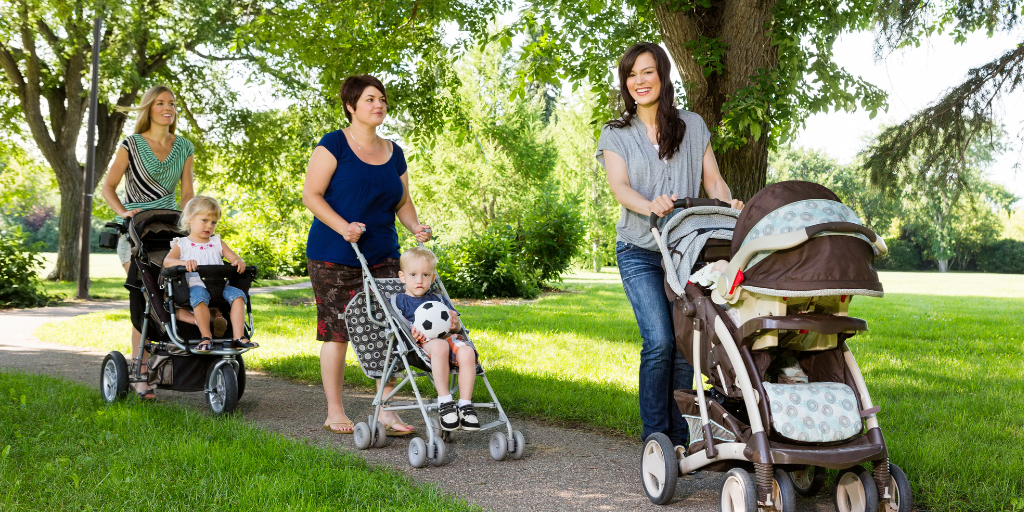When can I exercise like “normal” after having a baby?
Pregnancy and delivery (vaginal or Caesarian Section) affect your body in a way that takes well over 6 weeks to recover from. The 6 week clearance to exercise from your GP is not enough! Birthing people need support and guidance to return to exercise in a way that honours what their body has been through.
1. BEFORE your baby comes
Having a rough idea of what to expect after your birth is crucial, and research tells us that learning about what could happen (e.g. a perineal tear 😣) is actually helpful to recovery. And even if you don’t have a birth injury, muscles such as the pelvic floor and abdominals will have been stretched and weakened, so some caution is advisable before returning to previous exercise levels.
Loads of our mums tell us that the antenatal classes they attend are largely focused on the labour and birth process, so they don’t really know what to expect afterwards.
Pelvic Physiotherapists can help! – we can talk through and advise you, answering questions such as:
- What is normal healing vs what symptoms might you see that mean you’re doing too much?
- How much walking or exercise is appropriate for the first weeks after birth?
- When might you need to slow down?
- What are your post baby exercise goals? Have you got your eyes set on an event? Is this likely realistic or will it add to your stress in this already hectic period?
- Do you know how to look after your healing perineum/abdomen?
- Are you aware of how to prevent or manage constipation?
- When should you start pelvic floor exercises?
2. Baby is here ♥️
You’re supported by your midwife, coping ok and everything is feeling not too bad…..
BUT remember!
Your brain may be ready for exercise, but your body is not.
Why is my body not ready?
- During labour and delivery the pelvic floor muscles are stretched up to 2.5 times their normal resting length.
- Pelvic floor weakness or difficulty coordinating these muscles is common.
- The base of the bladder is more mobile after baby is born, which can lead to bladder leakage – this means better muscle support is needed.
- With a Caesarian section delivery, the scar on the wall of the uterus is still remodelling at six weeks. It is usually healed, but still needs time to strengthen to withstand forces. (The abdominal fascia has only regained 50% of its original tensile strength by six weeks postnatal, but reaches 73%-93% of original tensile strength by 6-7 months – Ceydeli et al, 2005).
During the first 6 weeks your pelvic physiotherapist might suggest:
- Pelvic floor muscle training – starting as soon as you can post birth (as long as it is not painful). Build up hold times from 1-2 seconds, working up to 10 seconds over time. Aim for 3 sets of 10 repetitions per day, usually in sitting.
- Walking – Short walks, perhaps with the buggy or front pack as you are able, starting with 10 minutes. Be vigilant looking for signs of pelvic floor fatigue – if you notice heaviness, bulging, or an ache after walking or a longer time on your feet, see a pelvic health physio for an assessment.
- Gentle movements similar to these – click here
- Postural advice and stretches to prevent neck and shoulder issues with breastfeeding.
- Body weight exercises, with good posture and technique.
- Cycling or swimming – depending on wound healing / bleeding.
For more information on returning to higher impact exercise, click here.
For further reading check out the articles below.
Selman R, Early K, Battles B, Seidenburg M, Wendel E, Westerlund S. Maximizing Recovery in the Postpartum Period: A Timeline for Rehabilitation from Pregnancy through Return to Sport. Int J Sports Phys Ther. 2022 Oct 1;17(6):1170-1183. doi: 10.26603/001c.37863. PMID: 36237644; PMCID: PMC9528725. click here
Donnelly, G & Brockwell, E & Rankin, A & Moore, I. (2022). Clinical Commentary – Beyond the Musculoskeletal System: Considering Whole-Systems Readiness for Running Postpartum. Journal of Women’s Health Physical Therapy. 46. 10.1097/JWH.0000000000000218.
Ceydeli, A., Rucinski, J. and Wise, L. (2005) Finding the best abdominal closure: an evidence-based review of the literature. Curr Surg 62, pp.220–5.

